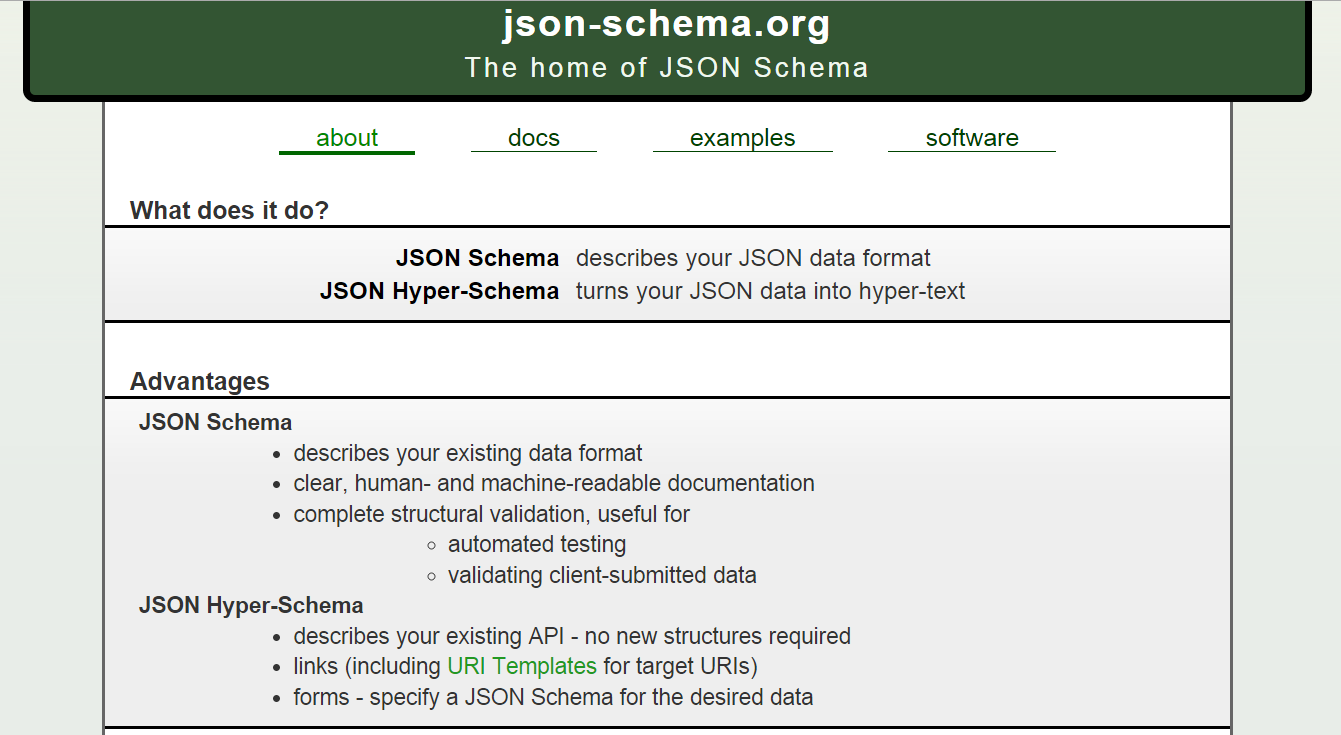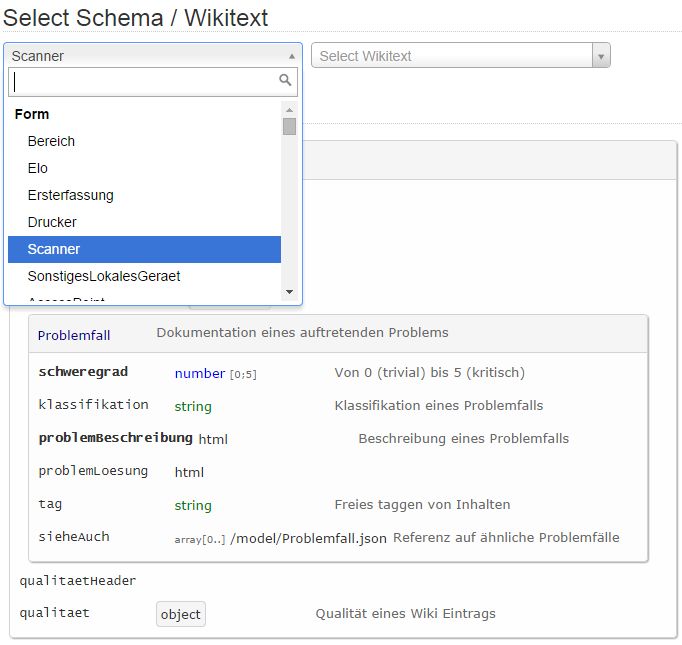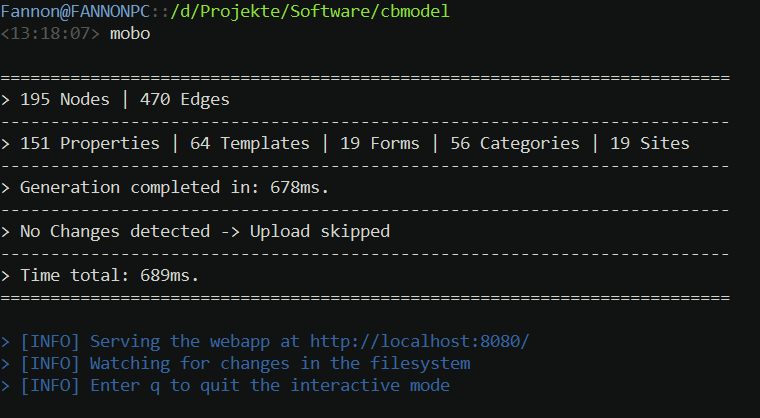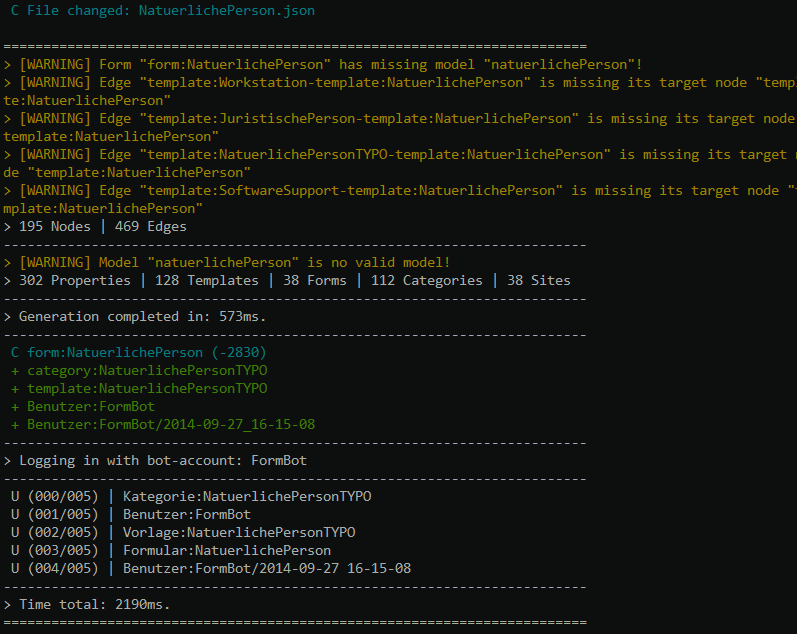Complex Data Model Generation with mobo
Simon Heimler (www.fannon.de)
University of Applied Sciences Augsburg, Germany
Computer Bauer GmbH, Munich, Germany
Preface
- Prototype in action
- Uses a very different approach than current solutions.
- Open Source and open to discussion!
Appetizer first
Outline
Using JSON Schema...
...for an object oriented...
...model development...
...workflow...
...in Semantic MediaWiki.
Conclusion & Live-Demo
USING JSON Schema
JSON Schema
- Data format for describing data formats / objects
- Easy to read/write for both humands and machines
- Published draft at IETF (Internet Engineering Task Force)
- Similar to XML Schema, but based on JSON
Example File
{
"firstName": "Simon",
"lastName": "Heimler",
"age": 27
}Example JSON Schema
{
"title": "Person",
"type": "object",
"properties": {
"firstName": {
"type": "string"
},
"lastName": {
"type": "string"
},
"age": {
"description": "Age in years",
"type": "integer",
"minimum": 0
}
},
"required": ["firstName", "lastName"]
}Use cases
-
Front- and Backend validation
All major languages supported! [tv4, jsv4-php] - Documentation generation [docson]
- Form / UI generation [json-editor]
- Random content generation [Schematic Ipsum]
- Data model generation [mobo]
json-schema.org

object-oriented
Object orientation
- More complex SMW models tend to have much redundancy
- This can lead to inconsistency - fast
- Inheritance can keep the model DRY (Dont Repeat Yourself)
- The OO paradigma is simple and well understood
Object-oriented JSON Schema
- JSON Schema uses
"$ref"to include and reuse schemas - BUT: There is no inheritance behaviour defined!
Own implementation
- Implemented custom, more explicit
"$extend"attribute which does proper inheritance - Through
"$extend"the relationship between the objects are defined, too - This leads to a (graph) database model that fits SMW well
SMW Specifics
- Uses Fields, Models and Forms that roughly equivalent SMWs Attributes, Templates and Forms
- Additional schema attributes that reflect SMW/SF settings
- Form settings can be defined as low as in Fields and are inherited / overwritten on the way up
Concept

/model/_Shape.json
{
"$schema": "http://json-schema.org/draft-04/schema#",
"title": "Shape",
"description": "Generic Shape",
"type": "object",
"properties": {
"x": {
"type": "integer"
},
"y": {
"type": "integer"
}
},
"required": ["x", "y"],
"abstract": true
}/model/Circle.json
{
"$extend": "/model/_Shape.json",
"title": "Circle",
"type": "object",
"properties": {
"radius": { "$extend": "/field/radius.json" },
},
"required": ["x", "y", "radius"],
"abstract": false
}/field/radius.json
{
"title": "radius",
"description": "The radius of a shape",
"type": "number",
"minimum": 0,
"smw_form": {
"input type": "text with autocomplete"
}
}model development

The model is a collection of folders and JSON files on your filesystem.
Use your favorite text editor and VCS!
- It is possible to split the model into several modular, reusable sub-projects.
- With VCS its possible to go back and forward in the development state in seconds.
- With VCS the model can be developed and synced between many persons.

Web based GUI for browsing/viewing the final, inherited model state

... and the wikitext results
Interactive model graph explorer
workflow
GETTING STARTED
-
npm install mobo -g
Installs mobo as a global NPM (Node.js) package -
mkdir new_project && cd new_project
Creates a new directory and enters it -
mobo --init
Initializes a new (barebone) project -
nano settings.json
Adjust settings.json (login data!)
Using mobo
-
mobo

- Webapp is served at localhost:8000
Interactive Workflow
- A file of the development model is changed / added
- mobo detects the change and re-generates the model
- Model is validated. Errors and warnings will be displayed
- The result is compared to last upload state and only the changed sites will be uploaded via a Bot account

Semantic MediaWiki
Target Installation
- Semantic MediaWiki and Semantic Forms are required
- HeaderTabs Extension is supported
- Visual Editor TemplateData Extension is supported;
will be used for template documentation

Form with HeaderTabs

Site with HeaderTabs

Documentation and usage snippet is auto generated

A report is generated and uploaded
Conclusion
- Very useful toolset for my own model development process
- Great at keeping the model consistent, possible to update dozends of wiki sites in a minute.
- Works well with prototyping / iterative development process.
- SMW/SF doesn't support some features that would come cheap (HTML5 front-end validation!)
- Completely independent from SMW/SF
- Adds to the learning curve of SMW
- Model needs to have a certain complexity to make using the toolset viable
- No GUI for editing
Project state
- Working Prototype
- Currently tailored to the specific needs of a specific project,
but this might change. - Open Source at github.com/Fannon/mobo
DEMO
Questions?
Thanks for listening!
If you've got feedback or questions, just talk to me!
Excursus
WHY NO OWLs?
- OWL is more flexible and powerful
- OWL supports reasoning / inference
- OWL is much more difficult than JSON Schema
- Simple things like hard validation are difficult with OWL.
It requires another complex layer on top of a already complex system. (e.g. Pellet Integrity Constraints)
My personal philosophy
The foundations should be as easy and barebone as possible while beeing still highly flexible / modular
More complex features should come on top of that
Excursus
How about
Page Schemas?
- Schema editor in the browser
- Easy to understand / use
- Requires no additonal technologies
- Tightly integrated in SMW
- Supports no inheritance
- No Validation
- Slower Workflow
0